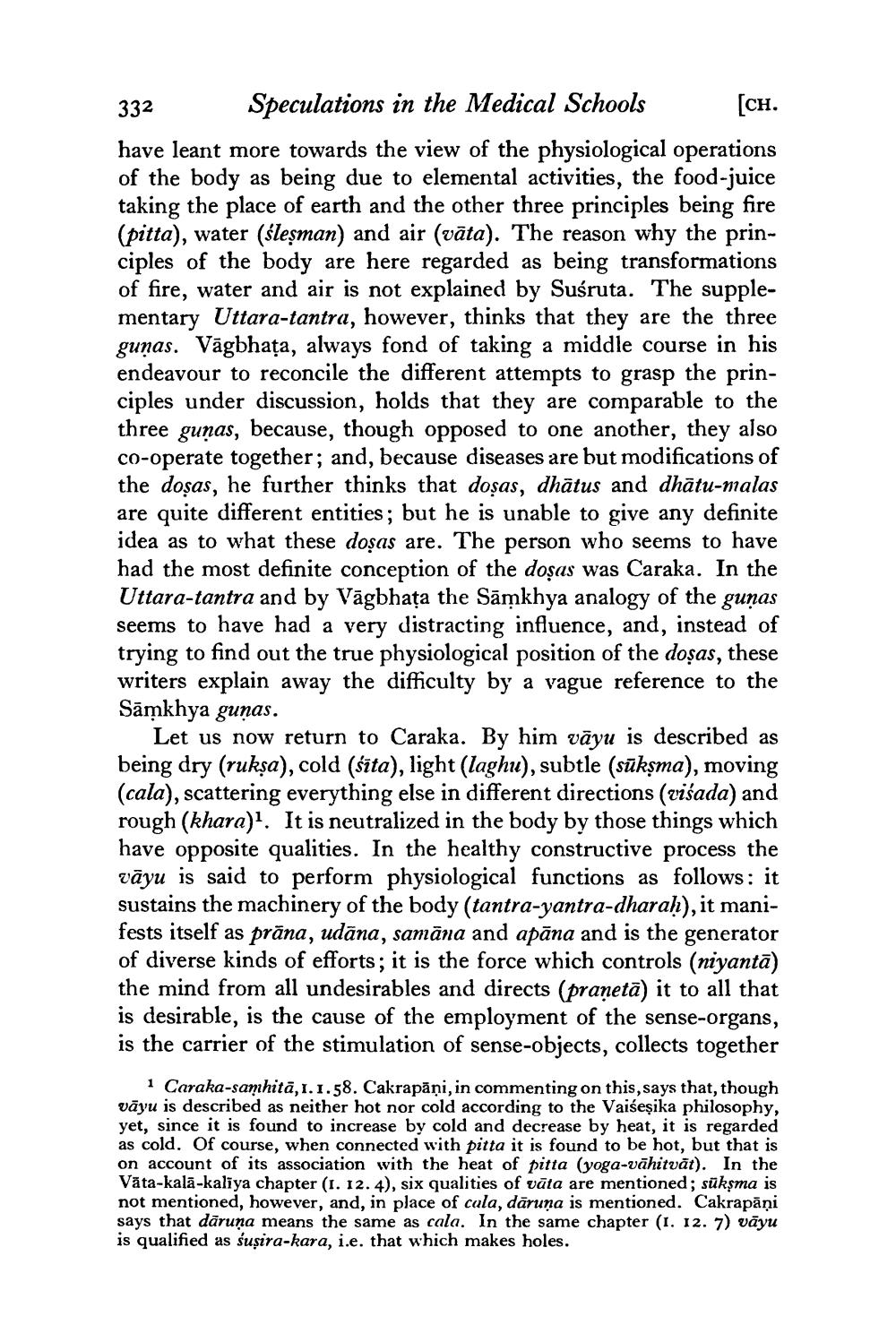________________
332 Speculations in the Medical Schools [CH. have leant more towards the view of the physiological operations of the body as being due to elemental activities, the food-juice taking the place of earth and the other three principles being fire (pitta), water (śleşman) and air (vāta). The reason why the principles of the body are here regarded as being transformations of fire, water and air is not explained by Susruta. The supplementary Uttara-tantra, however, thinks that they are the three guņas. Vāgbhața, always fond of taking a middle course in his endeavour to reconcile the different attempts to grasp the principles under discussion, holds that they are comparable to the three guņas, because, though opposed to one another, they also co-operate together; and, because diseases are but modifications of the dosas, he further thinks that dosas, dhātus and dhātu-malas are quite different entities; but he is unable to give any definite idea as to what these doșas are. The person who seems to have had the most definite conception of the doșas was Caraka. In the Uttara-tantra and by Vāgbhata the Sāmkhya analogy of the gunas seems to have had a very distracting influence, and, instead of trying to find out the true physiological position of the doșas, these writers explain away the difficulty by a vague reference to the Sāmkhya guņas.
Let us now return to Caraka. By him vāyu is described as being dry (rukşa), cold (śīta), light (laghu), subtle (sūkşma), moving (cala), scattering everything else in different directions (visada) and rough (khara). It is neutralized in the body by those things which have opposite qualities. In the healthy constructive process the vāyu is said to perform physiological functions as follows: it sustains the machinery of the body (tantra-yantra-dharah), it manifests itself as prāna, udāna, samāna and apāna and is the generator of diverse kinds of efforts; it is the force which controls (niyantā) the mind from all undesirables and directs (prañetā) it to all that is desirable, is the cause of the employment of the sense-organs, is the carrier of the stimulation of sense-objects, collects together
1 Caraka-samhitā, 1.1.58. Cakrapāņi, in commenting on this, says that, though vāyu is described as neither hot nor cold according to the Vaiseșika philosophy, yet, since it is found to increase by cold and decrease by heat, it is regarded as cold. Of course, when connected with pitta it is found to be hot, but that is on account of its association with the heat of pitta (voga-vähitvät). In the Vata-kala-kaliya chapter (1. 12.4), six qualities of vāta are mentioned; sükşma is not mentioned, however, and, in place of cala, dāruna is mentioned. Cakrapāņi says that dāruna means the same as cala. In the same chapter (1. 12. 7) vāyu is qualified as susira-kara, i.e. that which makes holes.




